Here are some of the most beautiful Purple and Green Plants to add some fun and color to your home or garden.
If you want to add a bit of drama and colors to the garden, then here’s a list of the most stunning Purple and Green Plants that are sure to impress!
Check out the best types of purple flowers here
Best Purple and Green Plants
1. Aglaonema
Botanical Name: Aglaonema rotundum
USDA Zones: 10-11
These Purple and Green Plants have splashes of purple or pink. They are perfect for beginners and grow best in low to medium light, making them ideal for homes and offices.
Learn the Easiest Way to Propagate Agaonemas here
2. Boat Lily

Botanical Name: Tradescantia spathacea
USDA Zones: 9-12
Boat lily, also known as Moses-in-a-basket, is another stunning plant that is easy to grow. It is a trailing plant with green leaves that have purple undersides, making it an excellent choice for hanging baskets.
If you are looking to Add Some Purple Houseplants, then Click Here
4. Caladium
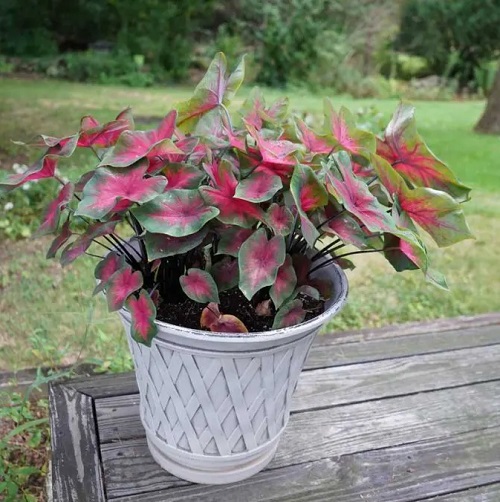
Botanical Name: Caladium
USDA Zones: 9-11
Caladium is another plant on the list of the Best Purple and Green Plants that is known for its striking foliage. This plant is easy to grow and thrives in warm, humid climates.
Find some Big Leaf Caladiums here
5. Coleus
Botanical Name: Plectentrus scutellarioides
USDA Zones: 10-13
These plants come in a variety of colors, but the purple and green combo is hard to beat. Varieties like black lace, black magic, fishnet stockings, flame thrower chili pepper, and black lace are some popular options.
Here are Some Quick Tips for Growing Coleus
6. Job’s Beard

Botanical Name: Sempervivum heuffelii
USDA Zones: 8-11
Job’s Beard, also known as Astilbe, is a beautiful flowering plant that can add a touch of purple and green to your garden. It has fern-like leaves that are green or bronze and tall spikes of feathery flowers that range in color from white to pink or purple.
7. Inch Plant
Botanical Name: Tradescantia zebrina
USDA Zones: 9-12
Another purple and green plant, prized for its striking purple and green leaves with silvery stripes. It’s low-maintenance and can be grown in a hanging basket or as ground cover outdoors.
Learn about Growing an Indoor Inch Plant here
8. Iron-Cross Begonia
Botanical Name: Begonia masoniana
USDA Zones: 11-12
Iron-Cross Begonia has large, asymmetrical leaves that are green with purple undersides adorned with silver veins and small pink or white flowers that bloom in summer. To grow Iron-Cross Begonia successfully, you should plant it in well-draining soil.
Look at some Pink Begonias here
9. Iron Cross Houseplant
Botanical Name: Oxalis tetraphylla
USDA Zones: 6-10
This purple and green plant has triangular-shaped leaves that are green with purple undersides and small pink or white flowers that bloom in summer. It is a stunning indoor plant that can add a touch of purple and green to your home.
10. Ornamental Cabbage
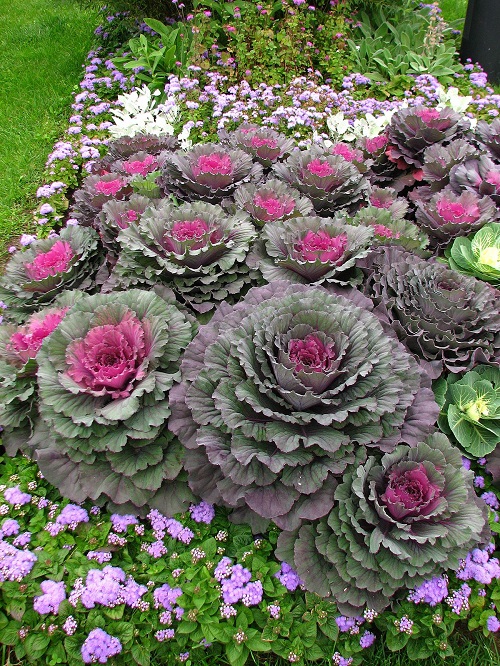
Botanical Name: Brassica oleracea
USDA Zones: 2-11
Ornamental cabbage, also known as kale, is a cool-season plant that is grown for its colorful leaves. These plants come in a range of colors, including green, white, pink, and purple, and can add a touch of color to your garden or patio.
Learn about some Shade-Loving Ornamental Plants here
11. Prayer Plant
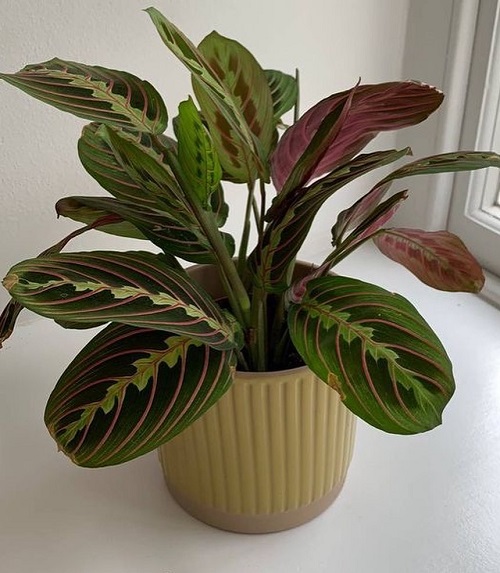
Botanical Name: Maranta leuconeura
USDA Zones: 11-12
It is a popular purple and green plant known for its striking foliage. These plants have deep green leaves with purple undersides, and they can add a touch of color and texture to any indoor space.
Find the Most Beautiful Prayer Plant Varieties here
12. Persian Shield

Botanical Name: Strobilanthes dyerianus
USDA Zones: 8-11
With its iridescent purple leaves, the Persian shield is a showstopper. It’s perfect for adding some drama to a garden bed or as a statement plant in a room. Plus, it’s surprisingly easy to care for – just give it some bright, indirect light and keep the soil moist.
Learn about Growing Persian Shield Indoors here
13. Purple Sword
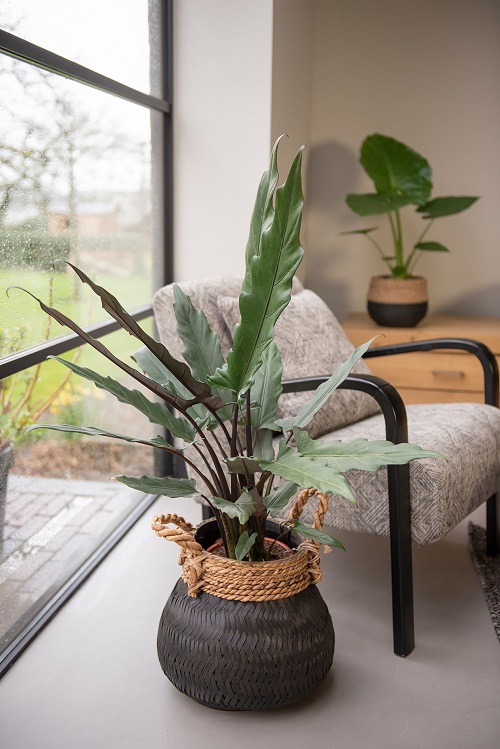
Botanical Name: Alocasia lauterbachiana
USDA Zones: 9-12
This purple and green plant features long, thin leaves that are a deep shade of purple and green, and it’s relatively easy to care for. It prefers bright, indirect light.
14. Purple Passion
Botanical Name: Gynura aurantiaca
USDA Zones: 6-12
The Purple Passion plant is a strikingly beautiful option for those looking for a pop of color in their indoor garden. This plant features green inside and deep purple on the outer border of the leaves. It prefers bright, indirect light and well-draining soil.
15. Purple Pearl Echeveria
Botanical Name: Echeveria ‘Purple Pearl’
USDA Zones: 9-12
The Purple Pearl Echeveria is a beautiful succulent that features soft, purple-green leaves and unique rosette-shaped foliage. It’s an easy-to-care-for purple and green plant that prefers bright, indirect light.
Look at some Big Echeveria Varieties here
16. Rex Begonia
Botanical Name: Begonia rex-cultorum
USDA Zones: 10-12
The Rex Begonia is another beautiful plant that features bold, patterned leaves in shades of green and purple. This is another great option to add a pop of color to your indoor garden.
Learn about Propagating Rex Begonias here
17. Rubber Plant
Botanical Name: Ficus elastica
USDA Zones: 10-11
The rubber plant is a classic indoor plant that features deep green leaves with a hint of purple. With its beautiful appearance, it’s also an easy-to-care-for plant that prefers bright, indirect light.
Learn about Growing Rubber Plants here
18. Ruby’s Necklace
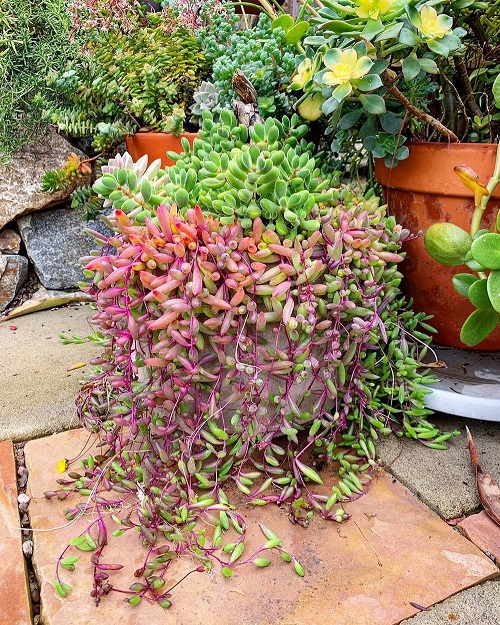
Botanical Name: Othonna capensis ‘Ruby Necklace’
USDA Zones: 9-11
Ruby’s Necklace is a stunning plant that features deep purple leaves and delicate, ruby-colored flowers. It is a great option for those looking for a low-maintenance yet beautiful plant.
19. Silver Squill

Botanical Name: Ledebouria socialis
USDA Zones: 10-11
The silver squill is a unique and eye-catching plant that features deep green leaves with purple undersides. It’s an easy-to-care-for plant that prefers bright, indirect light and well-draining soil.
Get the Best Silver Squill Care Guide here
20. Tiger Stripes Kalanchoe
Botanical Name: Kalanchoe humilis
USDA Zones: 10-12
The Tiger Stripes Kalanchoe is a stunning plant that features deep purple leaves with unique, tiger-stripe-like markings of green. It prefers bright, indirect light and well-draining soil, making it a great option for indoor gardening.
Find the Best Flowering Kalanchoe Varieties here
21. Velvet Leaf Philodendron
Botanical Name: Philodendron micans
USDA Zones: 9-12
The Velvet Leaf Philodendron is a beautiful and unique plant that features soft, velvety leaves in a deep shade of green. The plant is best for indoor gardening but prefers bright spots.
22. Waffle Plant
Botanical Name: Hemigraphis alternata
USDA Zones: 10-11
If you’re looking for a unique and beautiful plant, look no further than the waffle plant. With its striking purple and green foliage, it is sure to catch the eye of anyone who enters your home.
23. Purple Shamrock
Botanical Name: Oxalis Triangularis
USDA Zones: 8-11
This plant with purple and green leaves is also known as a false shamrock. It is a unique plant with leaves that are nearly black in color. But actually, the leaves have a very deep purple shade. They are shaped like triangles and usually grow together in groups of three.
24. Wandering Jew

Botanical Name: Tradescantia Zebrina
USDA Zones: 9-11
Wandering Jew leaves are known for their vibrant colors and distinct patterns. They feature a combination of shades like green, purple, and silver, often accompanied by stripes or speckles, making them visually striking.
25. Rose Painted Calathea


Botanical Name: Calathea Roseopicta ‘Dottie’
USDA Zones: 10-12
The Rose Painted Calathea leaves are a mesmerizing sight with their intricate patterns resembling brush strokes of pink, purple, and green. These unique markings add a touch of elegance and artistic flair to the plant’s foliage.
26. Sand Rose
Botanical Name: Anacampseros Rufescens
USDA Zones: 11-12
The Sand Rose is a succulent plant that grows slowly and forms clumping mats. Its leaves have two colors: the top is dark green, and the underside is deep purple. When the plant is happy and experiencing some stress, the green turns into a reddish shade.
27. Purple Basil

Botanical Name: Ocimum Basilicum L.
USDA Zones: 9-11
Purple Basil leaves are distinguished by their rich, deep purple color, adding a vibrant and eye-catching element to any garden or dish. With their aromatic fragrance and slightly peppery taste, these leaves are a delightful addition to various culinary creations.
28. Purple Passion
Botanical Name: Gynura Aurantiaca
USDA Zones: 6-9
The oval-shaped leaves of Purple Basil are smooth and green, with striking bright purple edges and veins. The leaves also have a subtle purple shine because of the tiny hairs on the surface. Additionally, the plant features vivid purple stems, making it a vibrant and colorful choice for indoor foliage displays.
29. Echeveria ‘Perle Von Nürnberg
Botanical Name: Echeveria ‘Perle Von Nürnberg’
USDA Zones: 9-12
‘Perle von Nurnberg’ is a stunning gray succulent that retains its evergreen foliage. When exposed to full sun, its leaves transform into shades of pink and purple, adding a captivating touch. In the summer, the plant produces lovely pink flowers with yellow centers, enhancing its beauty further.
30. Never-Never Plant

Botanical Name: Stromanthe Thalia ‘Triostar’
USDA Zones: 10-12
Native to Brazil, this lush plant showcases graceful pointed green leaves adorned with splashes of pale green, cream, and pink on the upper surface while revealing deep pink, maroon, or magenta hues underneath.


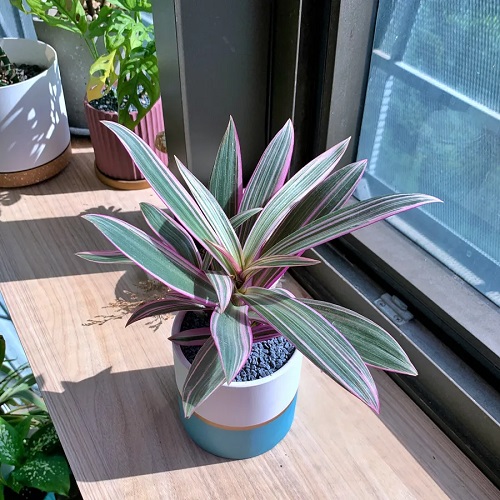

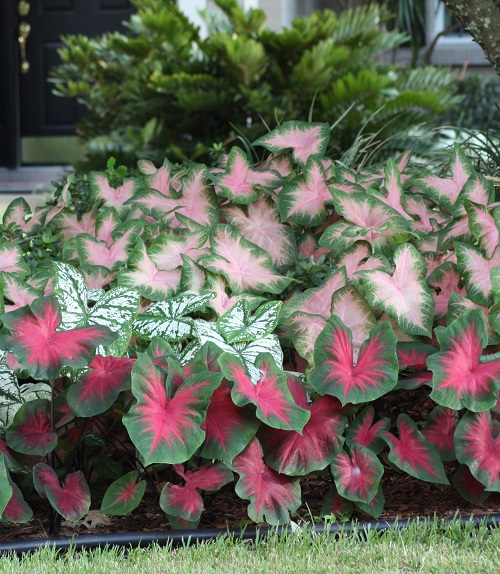

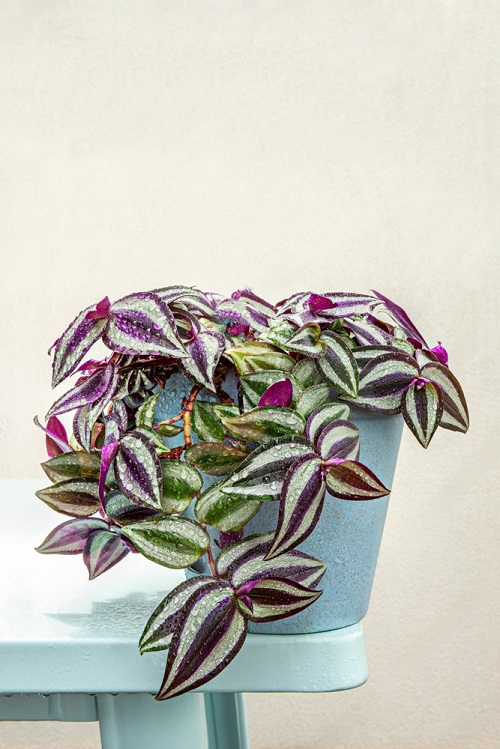

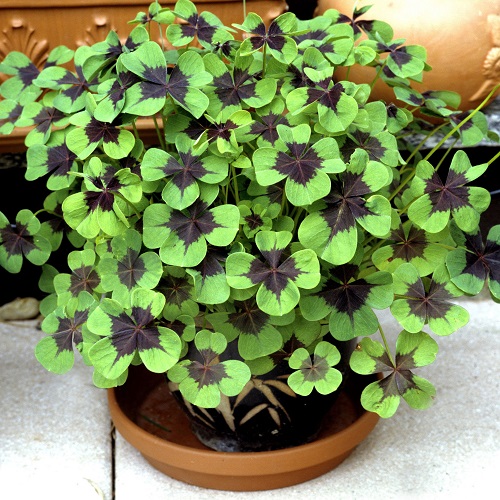
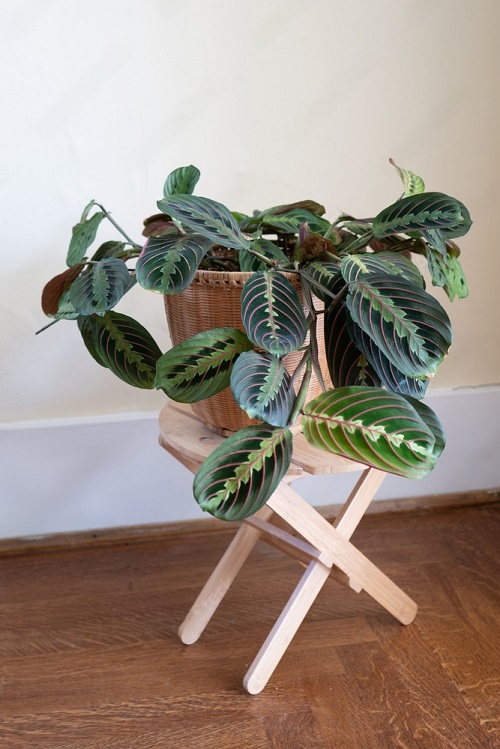


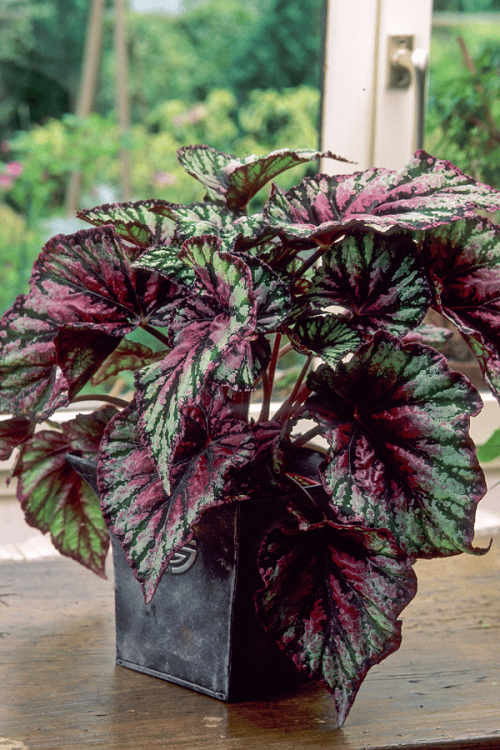
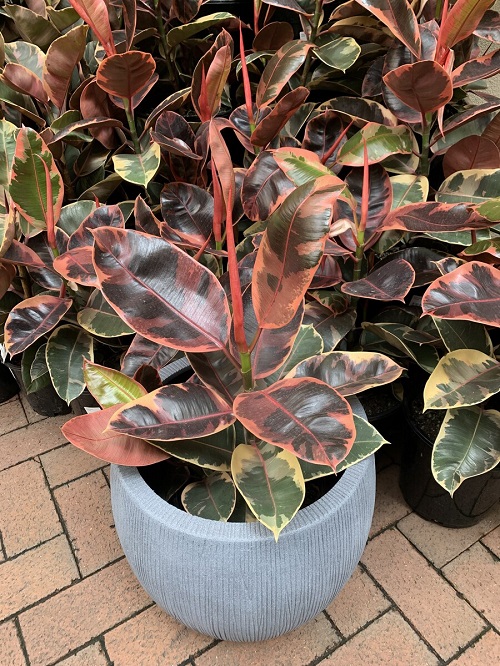


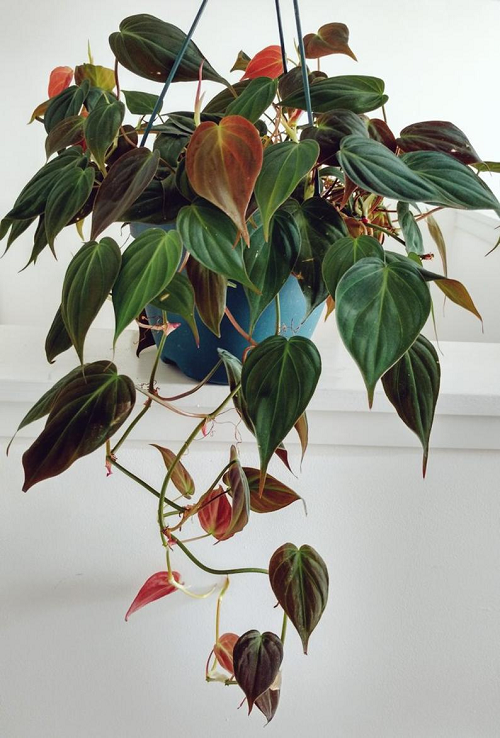


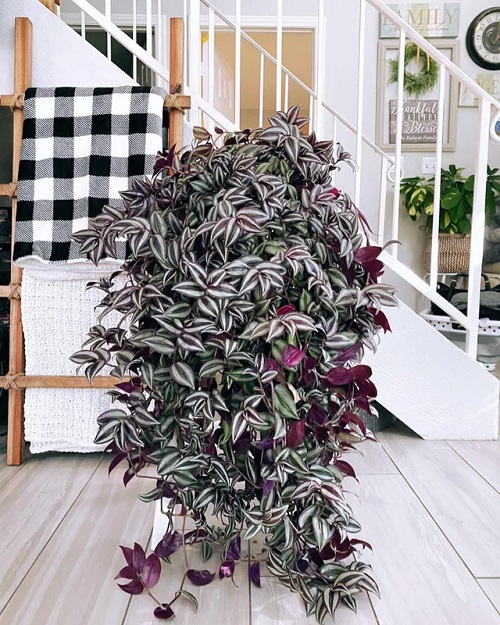
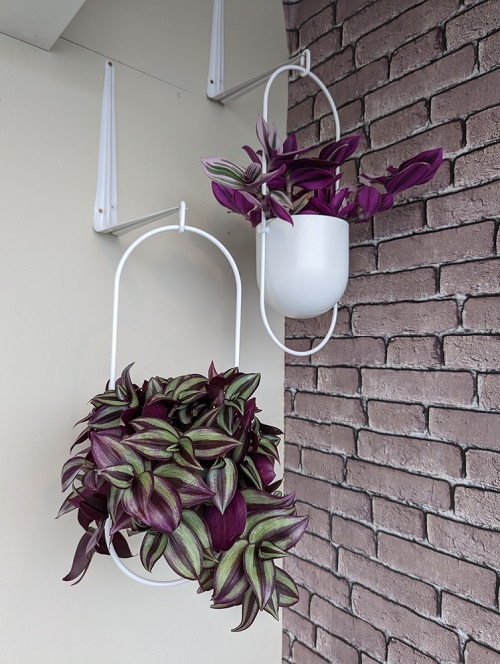

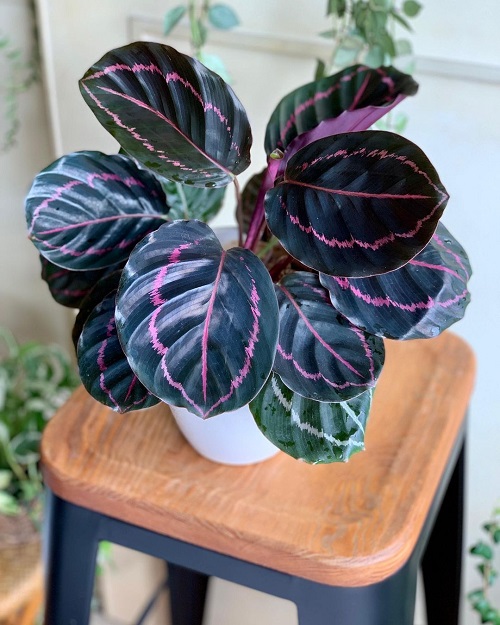
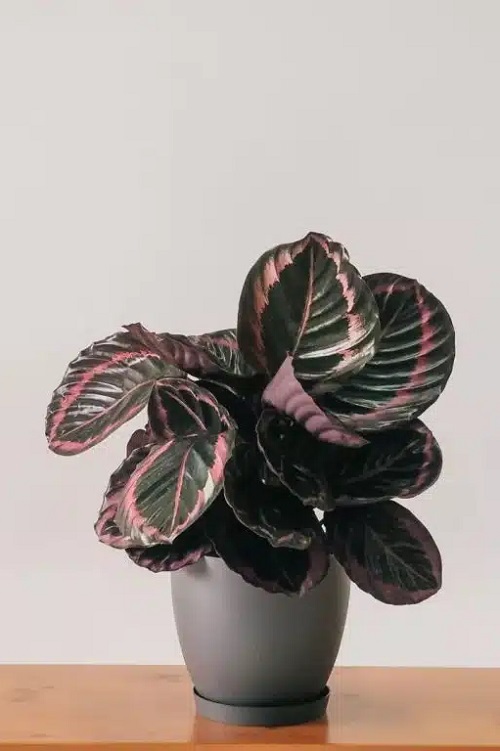


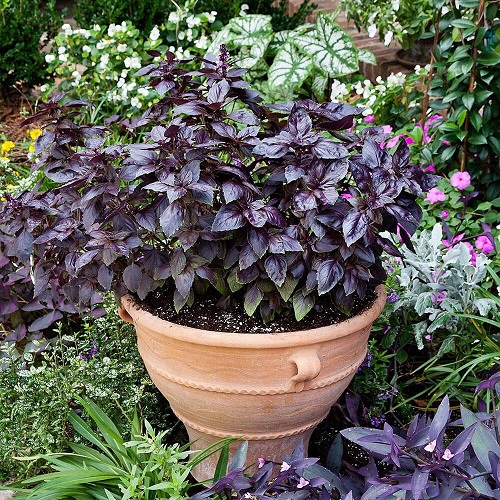
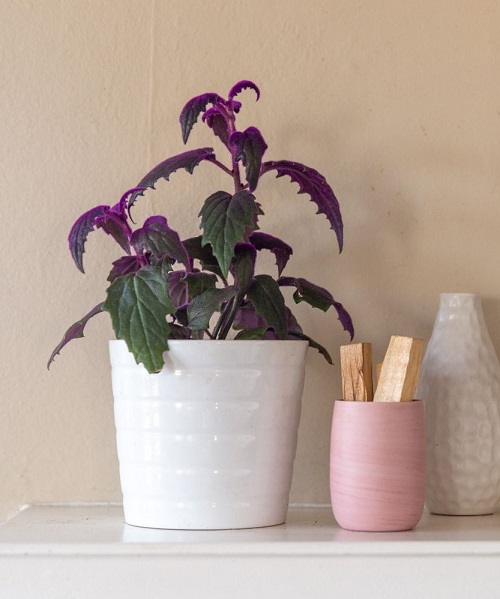


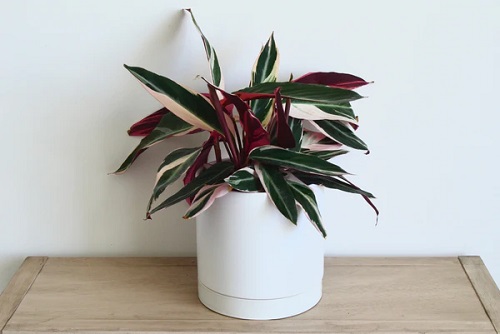

I really enjoyed reading your blog post on the “22 Best Purple and Green Plants You Should Try Growing.” It was incredibly informative and gave me some fantastic ideas for adding vibrant colors to my garden. I appreciate the variety of plants you mentioned, as it caters to different preferences and growing conditions.
The inclusion of detailed descriptions for each plant, along with their specific care instructions, was especially helpful. It’s great to know which plants thrive in specific light conditions and how to best care for them. Your suggestions for incorporating these plants into various garden designs, such as borders, containers, or hanging baskets, were inspiring and gave me a lot of creative options to explore.
The beautiful photographs accompanying each plant description added an extra touch of visual appeal to the post. Seeing the stunning shades of purple and green in the featured plants made me even more eager to start growing them in my own garden.
Overall, your blog post has motivated me to experiment with new colors and expand my plant collection. Thank you for sharing such valuable information and inspiring ideas. I look forward to more of your insightful posts in the future!